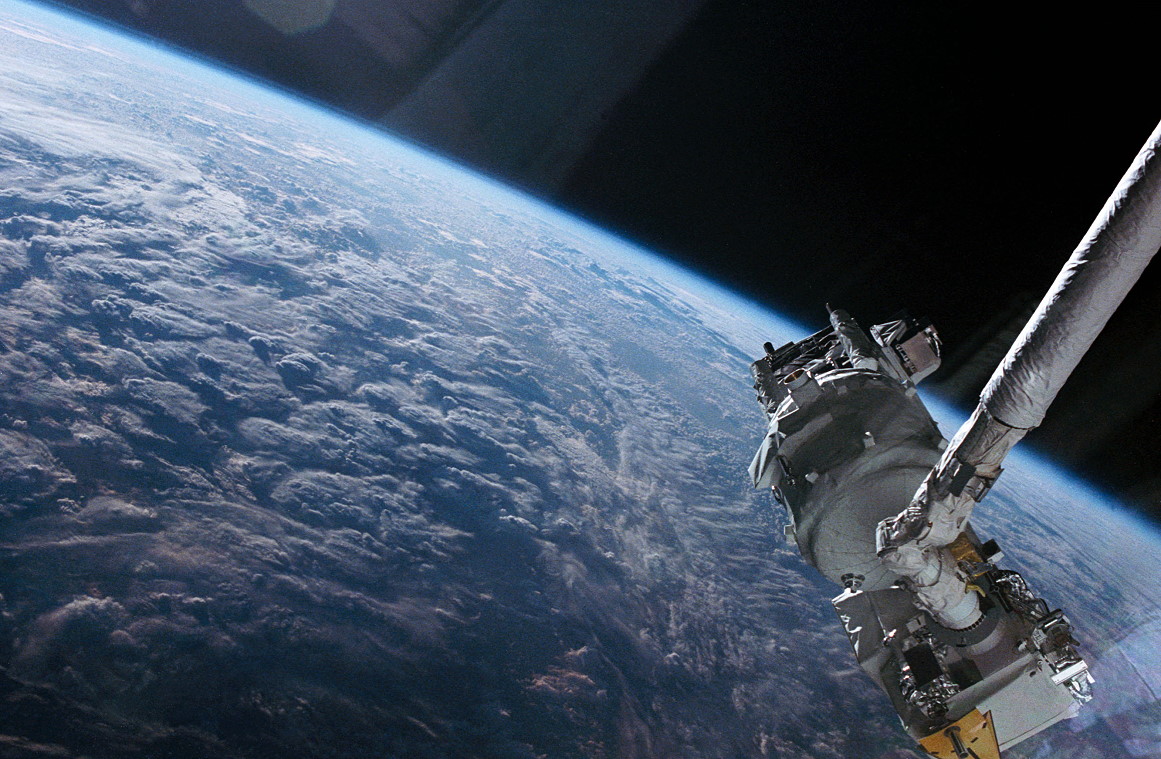
Thirty years ago, the loss of Challenger, on 28 January 1986, brought a healthy dose of reality about the perceived safety of the space shuttle for many of NASA’s astronauts. Among them was Air Force Col. Guy Bluford—the first African-American spacefarer—who had recently returned from his second shuttle mission. In the aftermath of the tragedy, Bluford took preparatory courses at the University of Houston at Clear Lake for a master’s in business administration, which he received in 1987, but his astronaut career was not yet over. Before he hung up his spacefaring helmet for good, Bluford would have flown one of the most ambitious shuttle missions ever attempted: a mission which not only included the first all-NASA crew of seven astronauts, but which turned out to be the longest piloted spaceflight ever conducted for the Department of Defense. That mission, STS-39, launched exactly a quarter-century ago, this month, in April 1991.
The Department of Defense had long harbored a great interest in the shuttle, and, indeed, the Air Force had provided powerful political lobbying for the reusable spacecraft during its genesis in the early 1970s. Before Challenger’s loss, it was anticipated that NASA would dedicate one of its fleet of orbiters, Discovery, to a series of classified missions out of Vandenberg Air Force Base, Calif. Many payloads were slated to be launched into high-inclination and polar orbits, and when the shuttle resumed operations in the fall of 1988 the Department of Defense took priority over many NASA science missions. However, Vandenberg as a shuttle launch site was mothballed and in the first four years after Return to Flight (RTF) a total of six fully-classified missions were flown out of the Kennedy Space Center (KSC) in Florida.
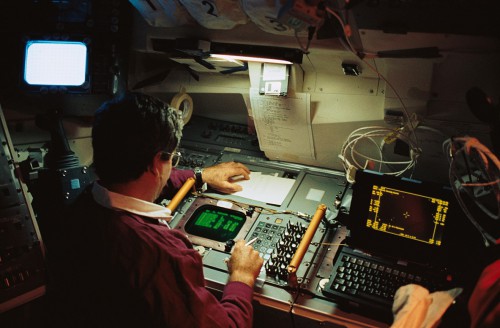
Also sitting on the shuttle’s packed manifest during the immediate post-Challenger era were a pair of missions, dedicated to conduct research for the Department of Defense and the Air Force, as well as the Strategic Defense Initiative (SDI). The latter—conceived under President Ronald Reagan’s administration and popularized as “Star Wars”— sought to develop technologies for transporting advanced military systems into space. One of the two missions, “Starlab,” was a dedicated Spacelab module-and-pallet flight for laser impingement and tracking experiments in conjunction with instruments on Wake Island in the Central Pacific Ocean. However, shuttle delays in the spring and summer of 1990 spelled the death knell for Starlab’s sponsors, and it was eventually canceled, but the other mission flew in early 1991 as STS-39.
Shortly after STS-26 brought the shuttle fleet back onto operational flight status, Guy Bluford and another astronaut, Lacy Veach—both seasoned Air Force veterans—were assigned to work with the Air Force in developing manned payloads. They worked at the Air Force Space Systems Division and the Aerospace Corp. in El Segundo, Calif. In May 1989, Bluford, Veach, and a civilian aerospace engineer named Rick Hieb were named as mission specialists for STS-39, then planned to launch in July 1990. At the time, it was apparent that this Department of Defense mission was somewhat distinct to its contemporaries: unlike most other flights of this era, it would carry a crew of seven (rather than five) and NASA noted that “the early assignment of mission specialists will provide for long-range crew participation in payload training and integration.”
However, STS-39 found itself delayed several times. Air Force Maj. Rob Crombie, who had been selected in September 1985—part of the third class of Manned Spaceflight Engineers (MSEs) for shuttle missions—worked extensively with Bluford, Veach, and Hieb to develop procedures and plan for problems with STS-39’s principal payloads, the Infrared Background Signature Survey (IBSS) and Air Force Program (AFP)-675. During their early months of training, Bluford and Veach flew regularly out to Lockheed Martin’s Space & Missile facility in San Jose, Calif., to work the procedures in a full shuttle flight deck simulator. By the late summer of 1989, it was apparent that STS-39 would not fly before the end of 1990 and this gave the astronauts some much-needed respite to do other things.
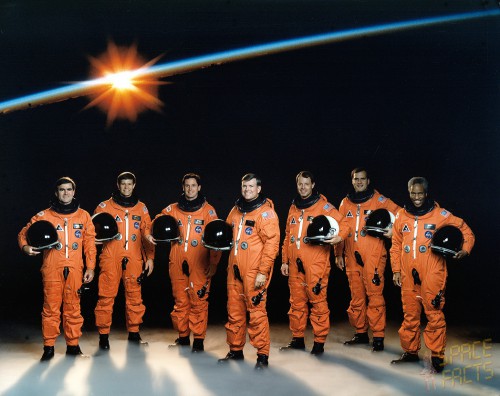
“Lacy had to take three to four months off, to go to McConnell Air Force Base in Wichita, Kan., for training in the F-16,” Bluford recalled in his NASA oral history. “We adjusted his training flow to take that into account and Lacy never missed a beat when he returned.” Meanwhile, Crombie served as their STS-39 crew representative and Bluford lauded his performance as “critical” to the eventual success of the mission. At length, in September 1989, four other NASA astronauts were assigned to round out the first—and only—seven-member crew ever to fly a Department of Defense flight. Veteran shuttle commander Mike Coats would lead STS-39, joined by pilot Blaine Hammond and mission specialists Greg Harbaugh and Don McMonagle.
It would mark the first occasion in the 30-year shuttle program that as many as five mission specialists would fly on a single mission. At one point, it was hinted that the additional two mission specialists took the places of a pair of Air Force MSEs, whose cadre had been stood down in the aftermath of Challenger. The identities of these MSEs were unidentified, although Bluford mentioned Crombie as having played a role in the mission training. Additionally, in May 1988, Flight International suggested another military officer—Air Force Maj. Glenn Scott Yeakel, selected as part of the second class of MSEs in September 1982—as being closely linked with the IBSS payload.
By the time Coats, Hammond, Harbaugh, and McMonagle joined STS-39, the mission’s launch date had slipped to no sooner than November 1990. This placed it just behind STS-41, a time-critical flight tasked with deploying the Ulysses spacecraft to explore the Sun’s polar regions. The narrow Ulysses launch window in October 1990, coupled with a busy shuttle manifest in the fall of 1990, caused NASA to remove STS-39 and postpone it by an entire year. In its January 1990 mixed-fleet schedule, the space agency announced that both IBSS and AFP-675 would fly on STS-51 no earlier than January 1992. The rationale was that it would protect the Ulysses launch window and provide flexibility for the KSC shuttle workforce. However, within months, the manifest changed again, and in March 1990 NASA announced that the mission had been revived as STS-39 and rescheduled for early 1991.
Of the seven-strong crew, only Coats and Bluford had flown before. At one stage, during training, they had a gag photograph taken, with the five “rookie” astronauts wearing Houston Rockets basketball kits and Bluford dressed as the team referee and Coats clad in the coach’s garb. And for Coats, who had flown two previous missions, STS-39 came as something of a surprise. He had expected his second flight to be his last. The loss of Challenger had severely shaken his wife, Diane, and she had made him promise not to fly a third time.
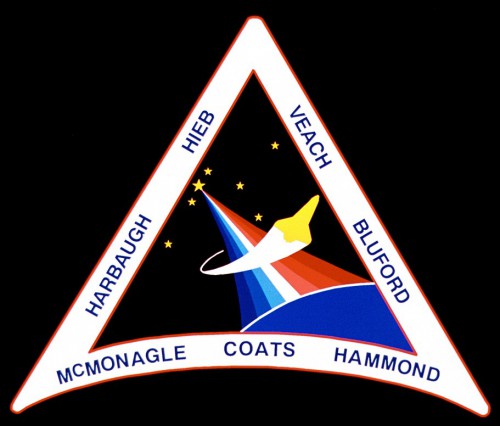
Unfortunately, by her own hand, Diane wound up helping to get her husband back in line for another shuttle mission. When Coats commanded STS-29 in March 1989—the first U.S. piloted spaceflight of George H.W. Bush’s administration—Diane joked that he should fly something for the new president, in the hope that he would invite them to the White House. Eventually, Coats flew a small gold shuttle charm for First Lady Barbara Bush and, during the mission, the crew spoke to the excited president and told him about it.
Shortly after returning to Earth, the STS-29 astronauts and their wives were invited to Washington, D.C. And later still, Coats and Diane were invited to a state dinner, whose other attendees included Audrey Hepburn and Bob Hope. At one stage in the evening, President Bush turned to Coats and asked: “Well, when are you going to fly again?”
“Well,” replied Coats, as paraphrased in his NASA oral history, “I promised my wife I would just fly that second flight.”
“Do you want to fly again?”
“Well, sure.”
“Let me see what I can do.” With that, the president got up from the table and went to speak to Diane. Coats watched as his wife frowned, then smiled. Bush returned moments later.
“I think it’s okay if you fly one more time.”
Coats was amazed. “What in the world did you tell my wife to make me expendable?”
“That’s between me and her.”
It turned out that the president had promised Diane a second invitation to the White House for dinner. The moral of the story, Coats told the NASA oral historian, was to always listen when one’s wife conceived of crazy ideas.
The second part of this article will appear tomorrow.
Want to keep up-to-date with all things space? Be sure to “Like” AmericaSpace on Facebook and follow us on Twitter: @AmericaSpace




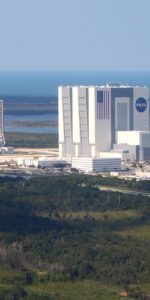
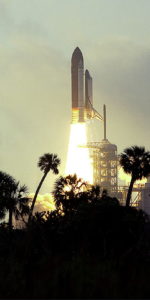
2 Comments
2 Pings & Trackbacks
Pingback:Malarkey Milkshakes: 25 Years Since STS-39 (Part 2) « AmericaSpace
Pingback:‘Putting Your Thinking Hat On’: 25 Years Since STS-43 (Part 1) « AmericaSpace